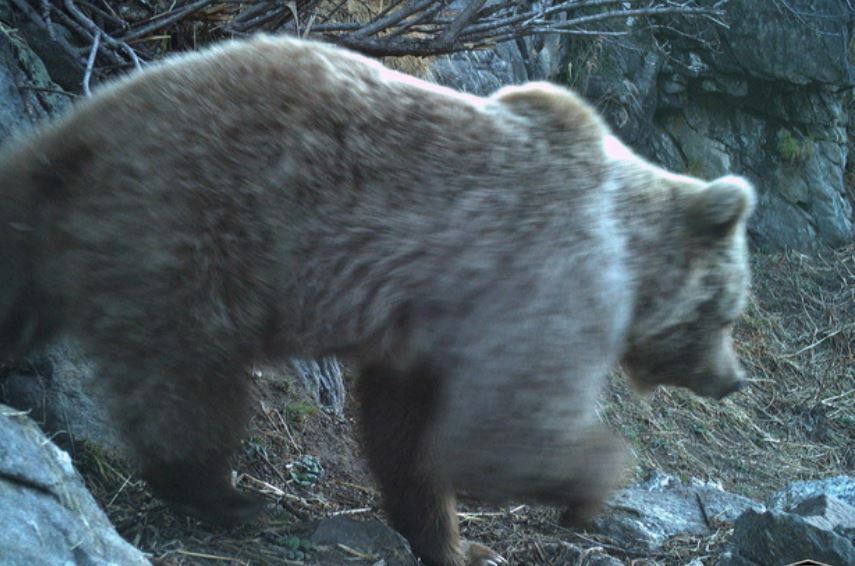
In 2022 we partnered with Nature Conservation Foundation to support a study into the effects of climate change on snow leopards.
Leopards, a species usually found at lower elevations, are now coexisting with snow leopards in certain high altitude pockets. Field studies, using camera traps, aim to understand the range where common leopards and snow leopards overlap.
40 camera traps were installed in the Great Himalayan National Park , in two remote valleys by an intrepid Nature Conservation Foundation team. The team installed the camera traps in late September last year.
Due to unseasonally heavy rains and landslides in Himachal Pradesh, field conditions were very tough. Bridges built by the forestry department had been washed away and rocky narrow trails along steep cliffs were overgrown or damaged. The team had to wade through deep water to access some of the areas they wanted to study.

Leopards (Panthera pardus) are known to be highly adaptable and able to survive where other large carnivores cannot. They are distributed across as many as 60 different countries in Africa and Asia.
In India alone, there are estimated to be around 15,000 leopards.
However, the global population of the species is listed as Vulnerable by the IUCN Red List (last assessed in 2022) and it continues to decline largely due to habitat loss and human activity.

Snow leopards (Panthera uncia) are listed as Vulnerable on the IUCN Red List of Threatened Species with fewer than 7,000 mature individuals estimated to remain across their range (12 countries).
Snow leopards were last assessed by the IUCN in 2016.
Snow leopards are known to be less adaptable and more sensitive to climate change than leopards, disappearing more readily.

Snow leopard country - or is it?
On the ridge at 4000m.

The team safely retrieved the cameras at the end of the year, and there are some interesting discoveries...
- 19 species of mammals and 5 species of pheasants were detected.
- The camera traps in the Sainj Valley had 2 detections of snow leopards and 6 detections of common leopards.
- The camera traps in the Tirthan Valley had an incredible 52 detections of common leopards which included a mother with two cubs (pictured). There were no snow leopard detections here.


Common leopard scent-marking in 2023 (Tirthan Valley, camera trap location at c 4000m)

Snow leopard scent marking the exact same spot in 2019 during the Population Assessment of the World’s Snow Leopards (PAWS)
Is this just a co-incidence or do the camera trap images reveal habitat competition between snow leopards and common leopards?
The study seems to indicate a healthy density of common leopard in the Trithan Valley, with leopards documented at higher elevations than would be expected.
Has the population strengthened since 2019, to the detriment of snow leopards? Are snow leopards being forced higher, or out of the area altogether?
Further field studies will be conducted in 2024 to continue building up a clear picture of both populations and movements, and analysis will be done on the 2023 findings.

Other species caught on camera: brown bear

Red fox

Himalayan Monal
Images: NCF India




